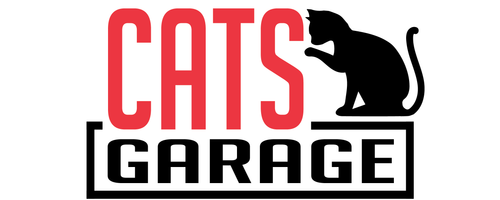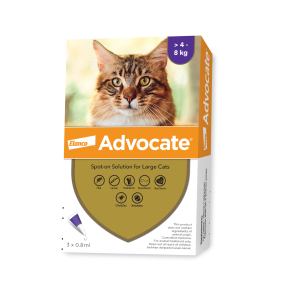Elanco Advocate Flea and Heartworm Treatment for Cats (4-8kg) / Box
$40.00
For Cats suffering from, or at risk from, mixed parasitic infections:
For the treatment and prevention of flea infestation (Ctenocephalides felis), treatment of ear mite infestation (Otodectes cynotis), prevention of heartworm disease (L3 and L4 larvae of Dirofilaria immitis) and treatment of infections with gastrointestinal nematodes (L4 larvae, immature adults and adults of Toxocara cati and Ancylostoma tubaeforme). The product can be used as part of a treatment strategy for flea allergy dermatitis (FAD)
For the treatment and prevention of flea infestation (Ctenocephalides felis), treatment of ear mite infestation (Otodectes cynotis), prevention of heartworm disease (L3 and L4 larvae of Dirofilaria immitis) and treatment of infections with gastrointestinal nematodes (L4 larvae, immature adults and adults of Toxocara cati and Ancylostoma tubaeforme). The product can be used as part of a treatment strategy for flea allergy dermatitis (FAD)
- For Cats 9 Weeks & Older, Over 1 Kg & Up To 4 Kg
- Comes in a box of 3 applications
- Waterproof: Remains Effective Even If The Animal Becomes Wet
- Covers The Broadest Spectrum Of Internal & External Parasites Available
- Continuous & Long-Lasting Protection Against Internal Parasites
- Two Active Ingredients: Imidacloprid & Moxidectin
Imidacloprid is effective against larval flea stages and adult fleas. Flea larvae in the pet’s surroundings are killed after contact with a pet treated with the product. Imidacloprid has a high affinity for the nicotinergic acetylcholine receptors in the post-synaptic region of the central nervous system (CNS) of the flea. The ensuing inhibition of cholinergic transmission in insects results in paralysis and death. Moxidectin is a parasiticide which is active against many internal and external parasites. Moxidectin is active against larval stages (L3, L4) of Dirofilaria immitis. It is also active against gastrointestinal nematodes. Moxidectin interacts with GABA and glutamate-gated chloride channels. This leads to opening of the chloride channels on the postsynaptic junction, the inflow of chloride ions and induction of an irreversible resting state. The result is flaccid paralysis of affected parasites, followed by their death and/or expulsion

